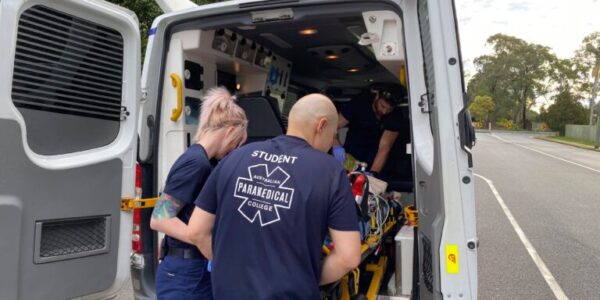What is a State Ambulance Paramedic?
If your true purpose is to help people, give back to your community and make a difference, a career as a Paramedic could be perfect for you. Each plays a critical role in providing advanced medical care and treatment to patients across not only Australia-wide but globally.
The career is as rewarding as it can be demanding, Paramedics are expected to be empathetic whilst both physically and mentally strong. The job requires you to think and adapt quickly to ever-changing situations while remaining calm under pressure. As a Paramedic, you can go from physically lifting patients into ambulances to comforting accident victims and their families in minutes.
Although challenging, being a Paramedic is extremely rewarding, allowing you to interact with the community and make a positive impact daily.
Typical duties of a State Ambulance Paramedic
- Assessing health of patients, determining need for assistance and factors affecting patients’ conditions.
- Resuscitating and defibrillating patients and operating life-support equipment whilst performing therapies and administering drugs according to protocol.
- Transporting accident victims to medical facilities.
- Instructing community groups and essential service workers in first aid.
- Attending public gatherings and sporting events where accidents and other health emergencies may occur.
- Ensuring that ambulances are adequately maintained and stocked with medical supplies, sterilized and in working order.
- Preparing written reports on the state of patients’ injuries and treatment provided.
Average State Ambulance Paramedic Salary
State Ambulance Paramedics salaries greatly vary, based on location, education, skillsets and more. Despite this, qualified and experienced paramedics can earn over $140,000.*
*Source: How to Become a Paramedic – Potential Salary
How to become a State Ambulance Paramedic
To work under the title of a ‘Paramedic’, individuals are required to hold a Bachelor of Paramedic Science (or similar). Whilst entry is competitive, there are two pathways one can take to apply, one of which provides you with the advantage beforehand too:
Direct Entry
If you’re a high-school leaver or a recent graduate with an ATAR, this is the most popular pathway to take. As each university has differing entry requirements, be sure to do your research beforehand to make sure it fits your wants and needs.
VET Entry
VET stands for ‘Vocational Education and Training’. It focuses on on-the-job training through certificate and diploma level studies, and if you study through Australian Paramedical College (APC), it’s nationally accredited too. Studying APC’s HLT51020 – Diploma of Emergency Health Care can place you on the best pathway to success for VET entry into university, providing you with the chance to gain employment in-field, confidence in your skills, time off your degree and even discounted university fees too!
To learn more about this pathway, click the button below.
Learn moreDiploma graduate becomes Trainee Paramedic
Sarah Sgroi is a graduate of APC’s HLT51020 – Diploma of Emergency Health Care, successfully holding the title for her region as ‘NSW Student of the Year’ and is currently working as a Trainee Paramedic with NSW Ambulance. Whilst these are amazing feats, she’s most importantly a devoted and loving mother to two at home.
Sarah shares in this video, “APC was definitely the best choice for me because I already had a toddler at home so the only option I felt like I had was something that was completely flexible, so I could study at my convenience in an environment that was good for me.”
State Ambulance Paramedic skillset and qualities
Effective communication
Being able to connect and communicate with patients is an important skillset for State Ambulance Paramedics
Empathy & patient care
State Ambulance Paramedics need to demonstrate compassion on a day-to-day basis who may be feeling vulnerable
Collaborative
Values teamwork and effectively collaborates with other ambulance services, hospital staff and the local community when assisting with patient transfers


